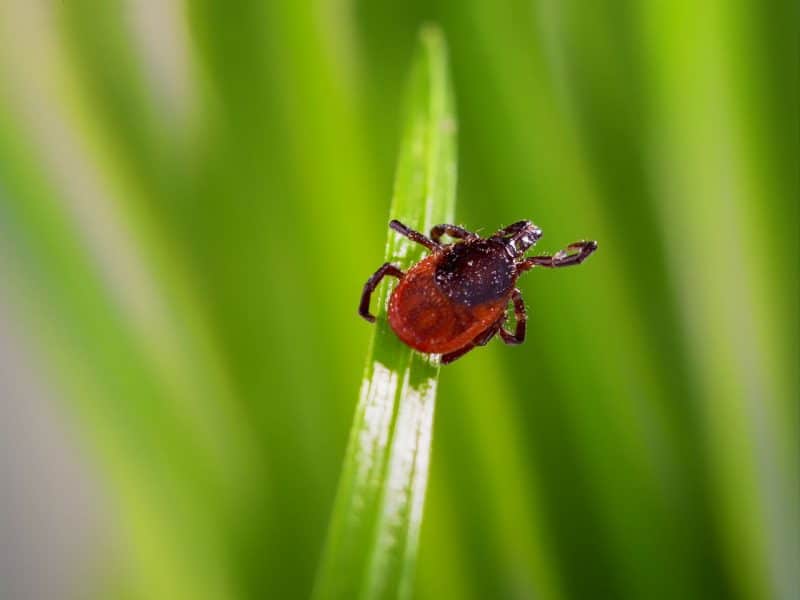Ticks are more active in the summer, yet you can prevent them from ruining the season for you. Summer is the time for engaging in outdoor activities and necessary protection against ticks. Hiking is a popular activity you can do daily. If you are a pet lover, you can do this with your dog. Enjoying being one with Mother Nature is a good way to refresh yourself, especially while dealing with the stresses of the pandemic.

Before you and your dog hike along that grassy trail, think about ticks for a moment. Remember that you will be entering the territory of an opportunistic parasite—the tick. Below are some important facts you should keep in inf when hiking this summer.
Common Tick Species
Various species of ticksreside and thrive in different regions in the United States. Each one carries and transmits diseases. While all of them may have the chance to bite a human, only a few can transmit diseases to humans.
- Brown dog tick
This species is found throughout Hawaii and the US. The primary hosts are dogs. Yet, if given the opportunity, they will bite humans and other mammals. The adult females carry and transmit Rocky Mountain Spotted Fever.
- American dog tick or wood tick
This species is found in some areas on the Pacific Coast. Large distribution in the east of the Rocky Mountains.
- Gulf Coast tick
This species thrives along the Gulf of Mexico and the coast of the Atlantic. The nymphs and larvae feed on small rodents and birds. Adult ones feed on bigger animals like deer. The adults are spreaders of Rocky Mountain Spotted Fever to the human population.
- Black-legged tick
The species lives in the upper Midwest and Northeast. You should take extra care not to be bitten in the fall, spring, and summer. Nymphs and adult females are the ones that bite. The adults may also bite during winter even if the temperature is above freezing.

- Rocky Mountain wood tick
This species thrives in southwestern Canada and the Rocky Mountain states. They stay at elevations of 4,000 to 10,500 feet. Adults feed on large animals.
- Western black-legged tick
Less than 1% of the species take blood from humans. The species live along the U.S. Pacific coast. They thrive in Northern California.
- Lone star tick
According to the Centers for Disease Control, this is the most aggressive species of tick. These appear in the Northeast and the upper Midwest. The adult females and nymphs bite humans. They trigger the Alpha-gal allergy and also spread diseases like Ehrlichia ewingii, tularemia, STARI (Southern tick-associated rash illness), Heartland virus, and Ehrlichia chaffeensis.

Protection During Hiking
Getting ready for hiking means that you should consider protecting yourself from ticks. Summer is the season of odors. Heat activates smells. Humans and animals tend to emit stronger smells during the hot months.
That is why ticks are more numerous and active during the warm and hot seasons. Preparing yourself for hiking includes protecting yourself from these parasites. Doing so will save you and your loved ones from the diseases they carry. Here are some pointers for protecting yourself from ticks:
Treat your hiking clothes to keep ticks away
Always treat your clothes with chemical tick repellents. These products must contain DEET, permethrin or picaridin. Take the time to treat your gear, clothes, and even the doggie backpack. The treatment will stay on for up to six washes or six weeks. You can also spray dog-friendly tick repellent on your furry friend before you leave. Remember that DEET (diethyltoluamide) can be dangerous if you do not use it the right way. It prevents ticks from landing on your dog’s skin and backpack.
Daily inspection for ticks
Always inspect yourself and your dog daily for any ticks or tick bites. This a basic thing to do after hiking through grassy areas or the woods. Ticks do not jump on you. They wait for your to come near them. Then, they stretch their legs and cling to your clothes. Ticks choose to stay in the warm spots to start feeding. Check your armpits, buttocks, waist, and panty line.

Be aware of where you step
It is wise to avoid areas where ticks thrive in large populations. These are grassy, woody areas. Do not place your backpack anywhere. If you are staying at a campsite, make sure to choose a clearing without shrubs or grass.
Cover your legs, wear black clothes
Make sure to cover your legs when you hike. Cover your ankles and legs because these are the most common areas of attachment for ticks. Dark clothing does not attract ticks. Even if they are easy to spot on light-colored clothes, you are safer with dark clothes.

Ticks carry diseases that may threaten your life. Take the time to pause and do a little more than apply sunscreen. Protecting yourself and your loved ones from these opportunistic parasites can make your summer hikes healthier and stress-free.